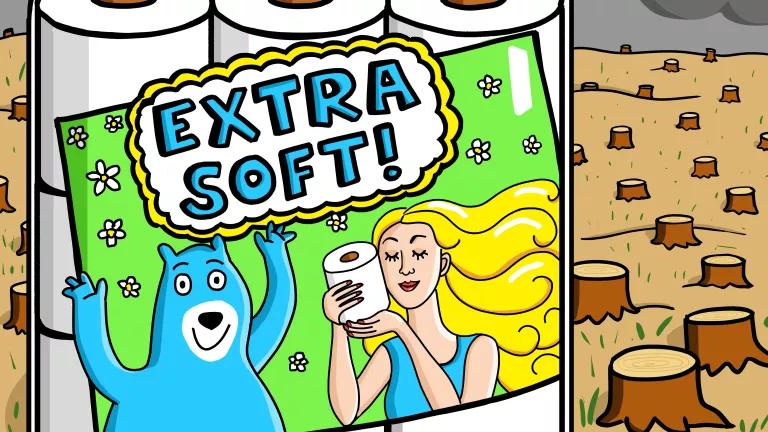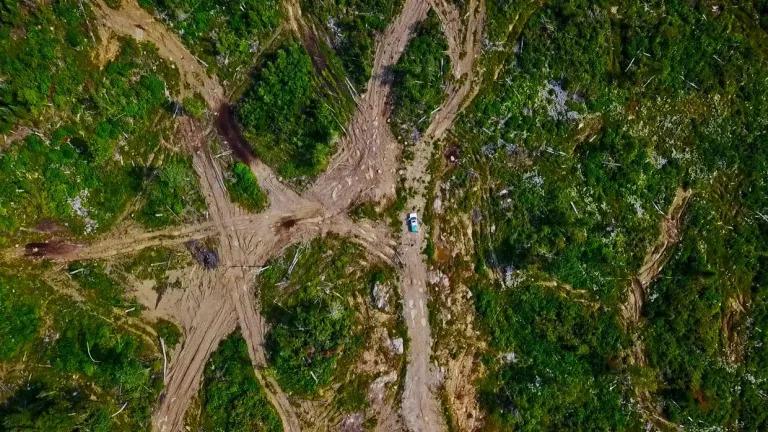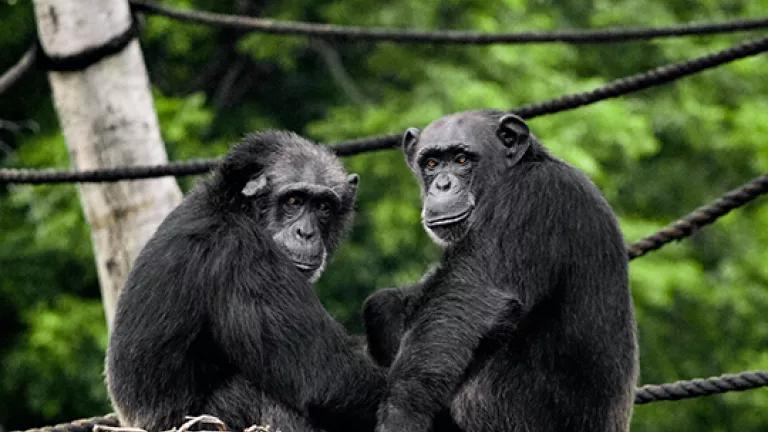New Report on Climate and Lands Carries Both Dire Warnings and Hopeful Solutions
The world must take immediate action to transform the way we use our land—forestry, agriculture, industrial and urban development—in order to avoid a climate catastrophe.

Trees cleared in a forest for a palm oil plantation, Borneo Island, Indonesia
When it comes to climate change, the future is in our collective hands. We need to act and spur our governments and corporations to move away from the business-as-usual that is undermining the very fabric of life on earth.
We know what is needed for transformative change. And we know the need is urgent. Decision-makers who think climate change is a problem for the future are wrong. The actions we take now will define our future and the legacy of our decision-makers.
A new international analysis—the Special Report on Land and Climate Change by the Intergovernmental Panel on Climate Change (IPCC)—is the latest in a series of dire warnings about climate change over the past year. The report outlines how the world’s current practice of using lands in destructive and unsustainable ways—clearcutting forests, displacing species from their habitats, and destroying the soil—is contributing to the crisis. Not only that, our lands are on the forefront of damage from climate change—our lands and the species that depend on them, including humans.
This is all against a backdrop of heartbreaking analysis from the international scientific community about a future with a changing climate. The IPCC climate report last fall warned that unless we act fast, we risk disastrous harm from climate change. A stunning U.N. assessment on biodiversity this spring told of global ecosystems on the verge of collapse, with as many as one million species in danger of extinction if we continue with business-as-usual.
It is also against the backdrop of the staggering signs of climate change that are hitting our world this summer: record-breaking lows of Arctic ice, extreme floods in the Midwest, an unprecedented killer heat wave in Europe, to name a few.
But like the earlier reports, the Special Report on Land and Climate Change offers guarded hope: If we make sweeping changes in the ways we use land on a global scale, the land itself can help us reduce carbon emissions. The report reflects the consensus of 107 leading scientists from 52 countries on behalf of the IPCC.
This look at land use’s intersection with climate is a reminder: Given the urgency of climate change, we won’t find enough emissions reductions by focusing only on power plants and vehicles that spew carbon pollution. How we handle land use—forestry, agriculture, industrial and urban development, and more—will determine if that land use is a significant contributor to climate change or a source of climate pollution reductions.
The IPCC report offers these key messages:
- Changes to forest and agricultural practices can drive down carbon emissions.
- Without immediate action to transform land use and the global food system, countries cannot meet the goals of the Paris Agreement while also ensuring food security and preserving biodiversity.
- Reducing food waste and choosing a plant-based diet can significantly reduce emissions.
- Continuing current land practices will increase emissions and may yield a food crisis.
To mitigate climate change, save wildlife, and secure our food supply, we need transformative change to our economy and our current practices. The tools for this transformative change are at our fingertips. But we can’t make the changes we need without political will—and accountability from the governments and corporations that are hastening, and not averting, the climate crisis.
Transformative change will mean protecting major areas of our lands and oceans around the world. At least 30 percent of the world’s lands and 30 percent of its oceans should be protected by 2030. This needs to be done in a way that protects representative ecosystems, ensures connectivity for wildlife, and helps mitigate climate change pollution and impacts.
Transformative change means restoration of natural ecosystems, such as our forests. However, the report makes clear that poorly designed efforts, such as tree planting without paying attention to proper ecosystem restoration, can add to the risks of desertification, ecosystem collapse, and food insecurity. Further, we need to make sure that investments in natural climate solutions to suck carbon out of the air are not seen as a substitute for immediate and dramatic greenhouse gas emissions cuts—the kind that can only be achieved via massive reductions in the use of fossil fuels and their rapid replacement with low-carbon options, such as energy efficiency and renewable energy. The time where we could see planting trees as a way to “offset” other types of climate pollution reduction is gone.
Transformative change means we need to change the way we grow our food. Agriculture is a major source of carbon emissions—but it doesn’t have to be. If we shift food production to promote crop diversity, we can radically improve soil health. The report makes clear that sustainable farming practices like cover crops, reduced tillage, and crop rotation will yield better soil carbon sequestration and help us fight climate change.
Transformative change means eating in a way that is healthier for our climate. When we decide what to eat, we’re making choices that send a signal to the marketplace. The beef industry emits one of the more dangerous greenhouse gases: methane. And we know that wasting food is also a driver of climate change; when we throw food away, we’re throwing away everything it took to make that food: climate pollution, water, pesticides, fertilizers, energy, packaging, labor.
Transformative change means that we need to stop burning our forests for fuel. Large swaths of land around the globe are used for “bioenergy” production under the guise of promoting renewable energy and reducing carbon emissions. It is time to debunk the dangerous myth that switching from fossil fuels to burning wood for electricity is a climate solution: We either protect and expand forests and maximize their carbon storage or we burn them for fuel. We cannot do both.
Nor can we afford to clearcut our remaining old-growth forests to make products for which there are climate-safe alternatives. The world’s largest intact forest, Canada’s boreal, stores nearly twice as much carbon in its vegetation and soils as is in our combined global oil reserves. It’s essential that that carbon stays in the ground and not be unleashed by industrial logging to produce single-use products like toilet paper.
And transformative change will mean assessing truly clean energy development options at a landscape scale. We must make sure that we move ahead and build the clean energy we need—such as wind, solar, and geothermal, rather than unsustainable biomass—while treating our natural ecosystems with respect and care.
One-quarter of all greenhouse gas emissions come from activities on land. Natural climate solutions—conservation, restoration, better land management—are cost-efficient ways to draw down carbon pollution and help us meet the goals of the Paris Agreement. They also bring additional benefits: clean air and water, species protection, sustainable livelihoods, and food security. This latest IPCC report is a call to action for decision-makers to embrace natural climate solutions as an indispensable part of the global response to climate change.
The climate-nature nexus carries both dire warnings and hopeful solutions. To move beyond business-as-usual to transformative change can be done in a way that increases our security, improves our livelihoods, and protects our natural systems and communities. This is what we need as a commitment from our leaders.




